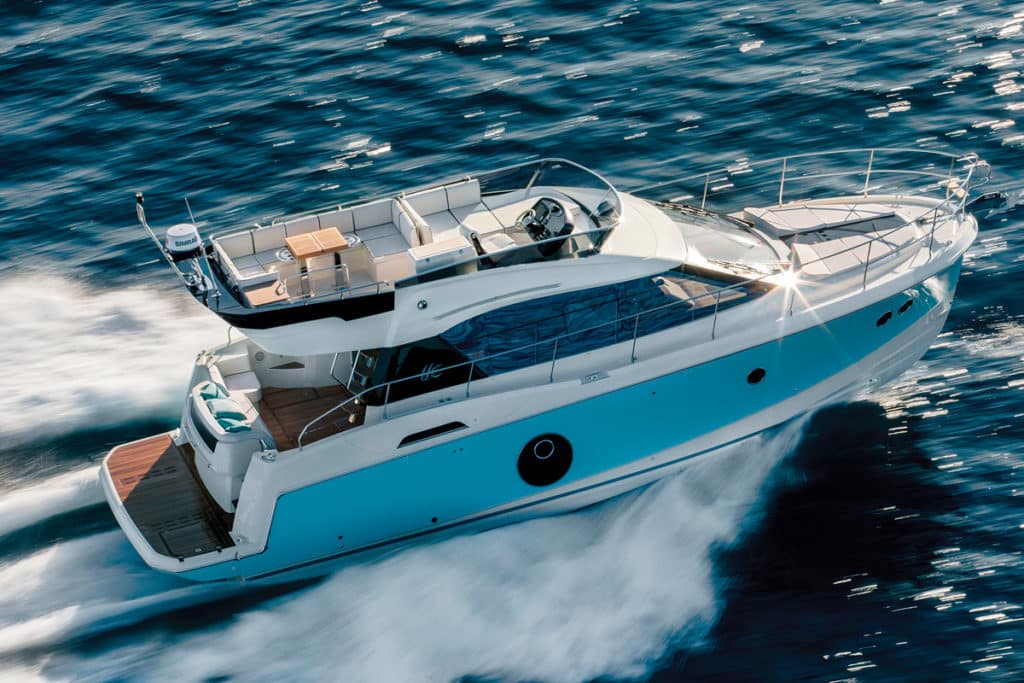
Beam: 13’5″
Draft (max): 3’9″
Displacement (approx.): 26,499 lb.
Transom Deadrise: 15 degrees
Bridge Clearance: 17’10”
Max Cabin Headroom: 6’6″
Fuel Capacity: 290 gal.
Max Horsepower: 740
Available Power: Twin Volvo Penta IPS pod drives to 740 hp
More Information: montecarlo.montecarloyachts.it/
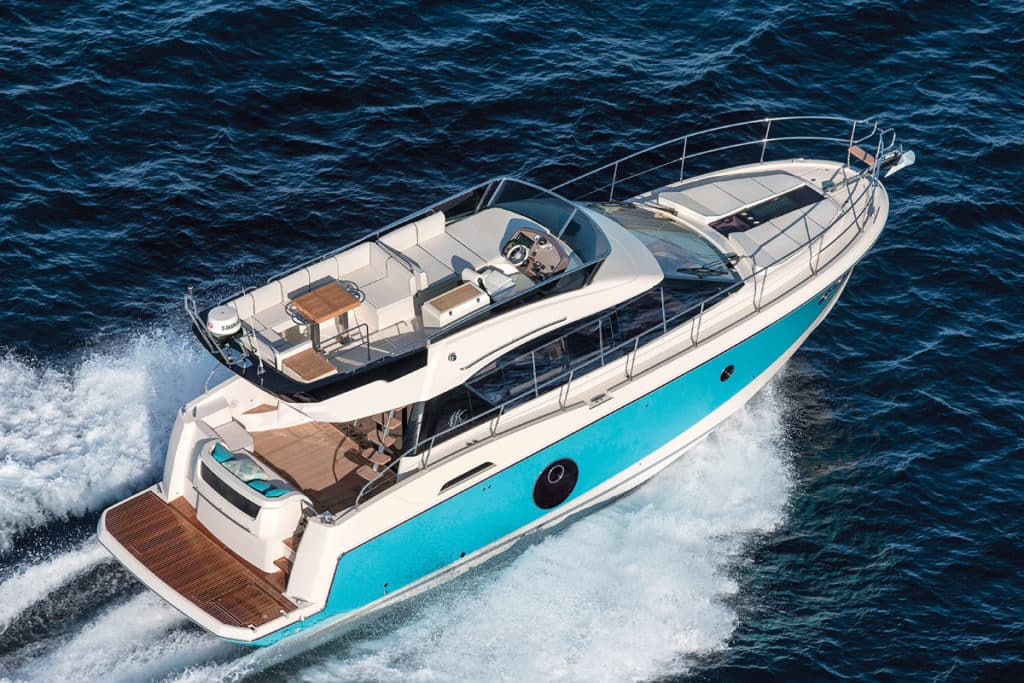
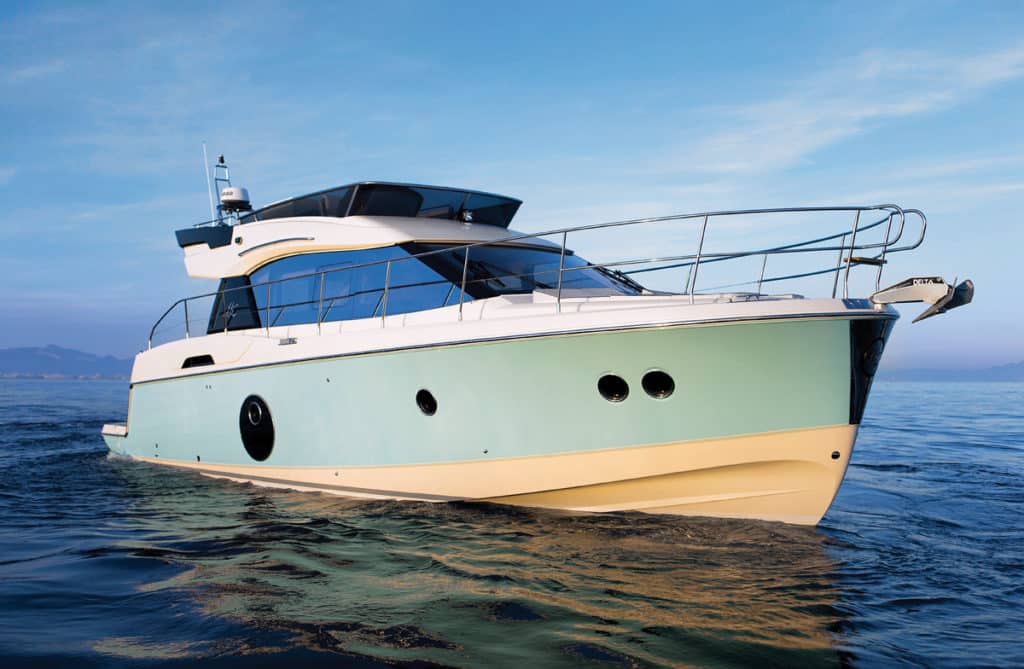
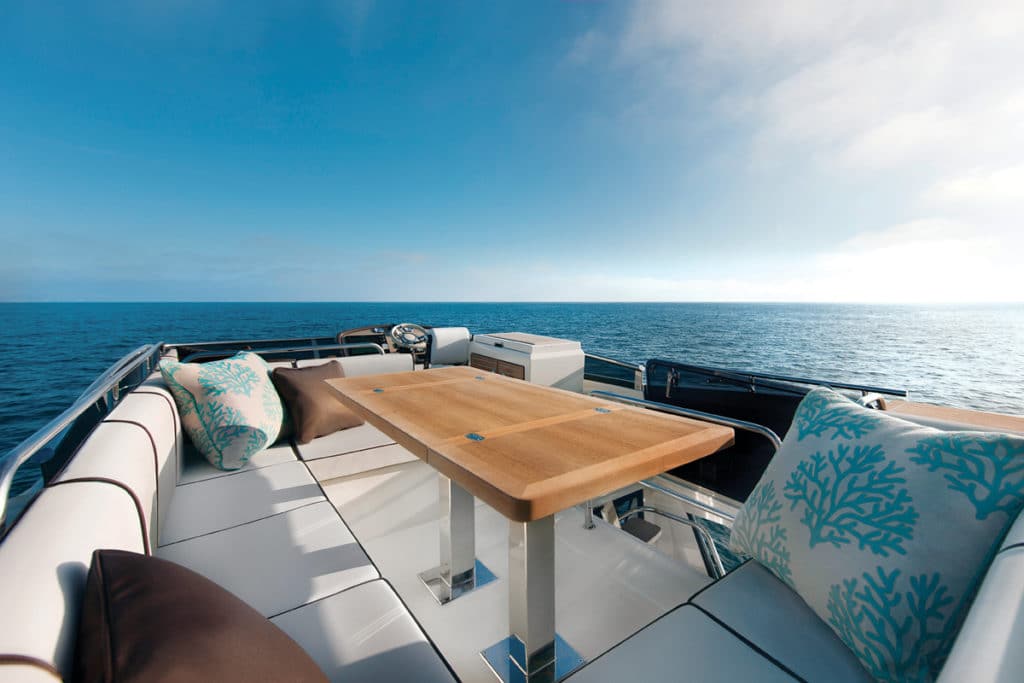
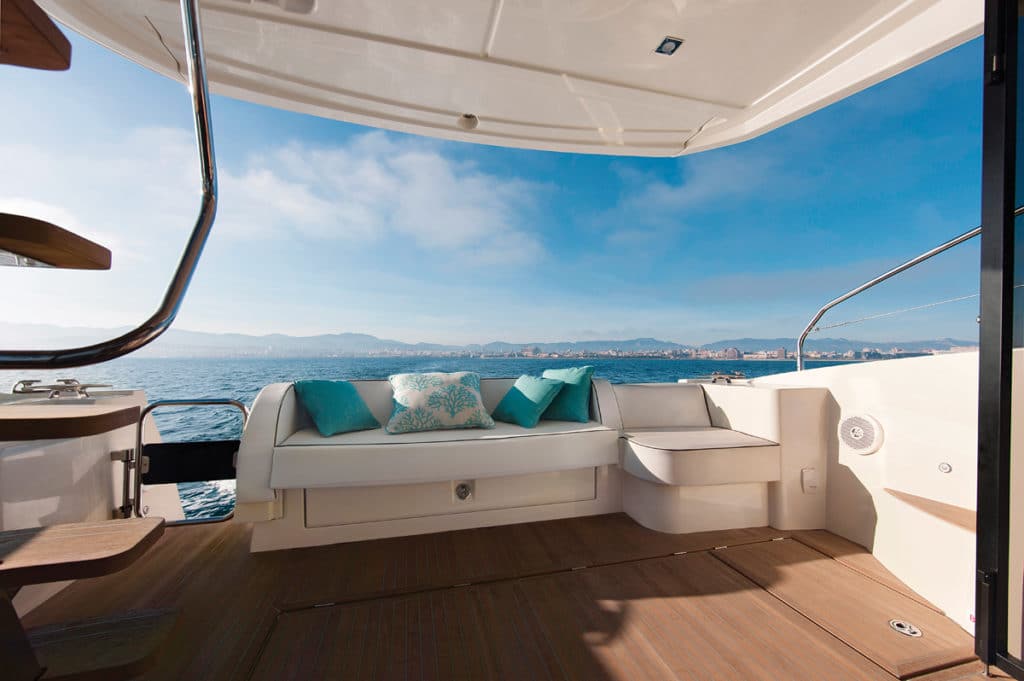
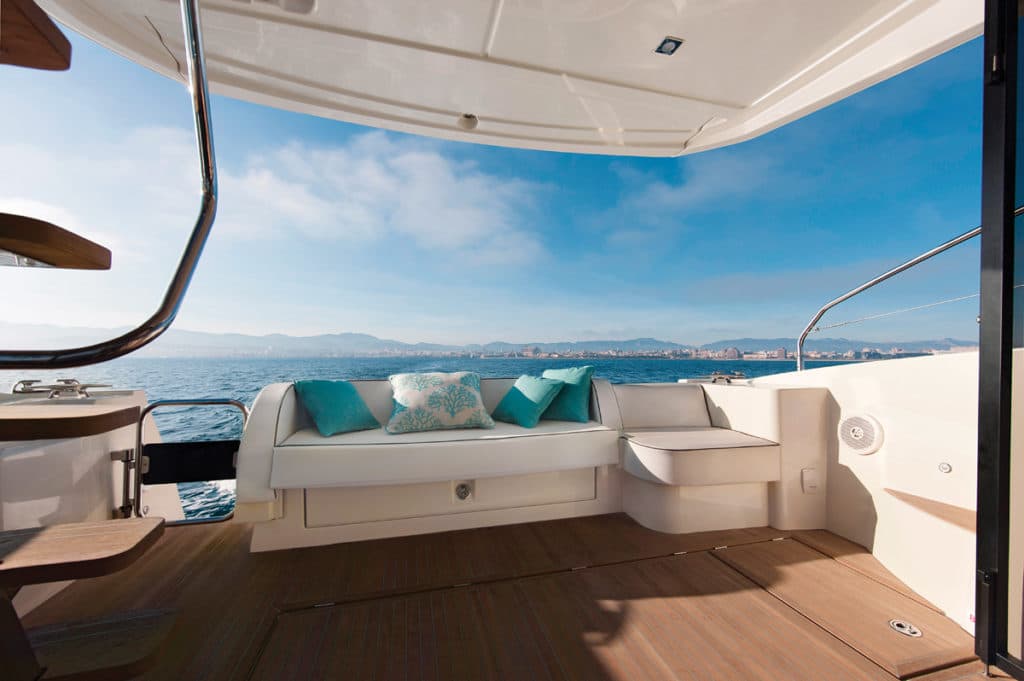
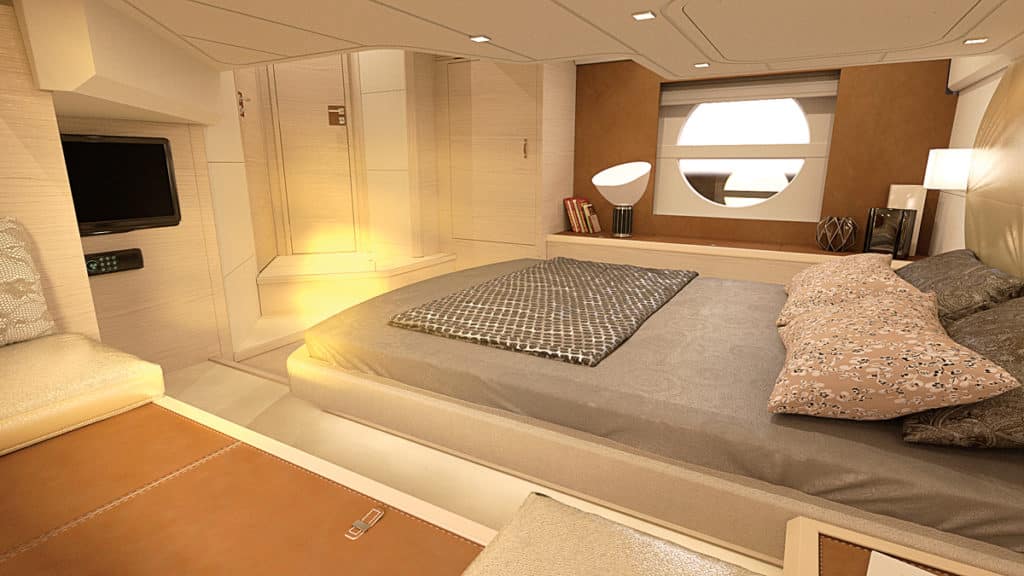
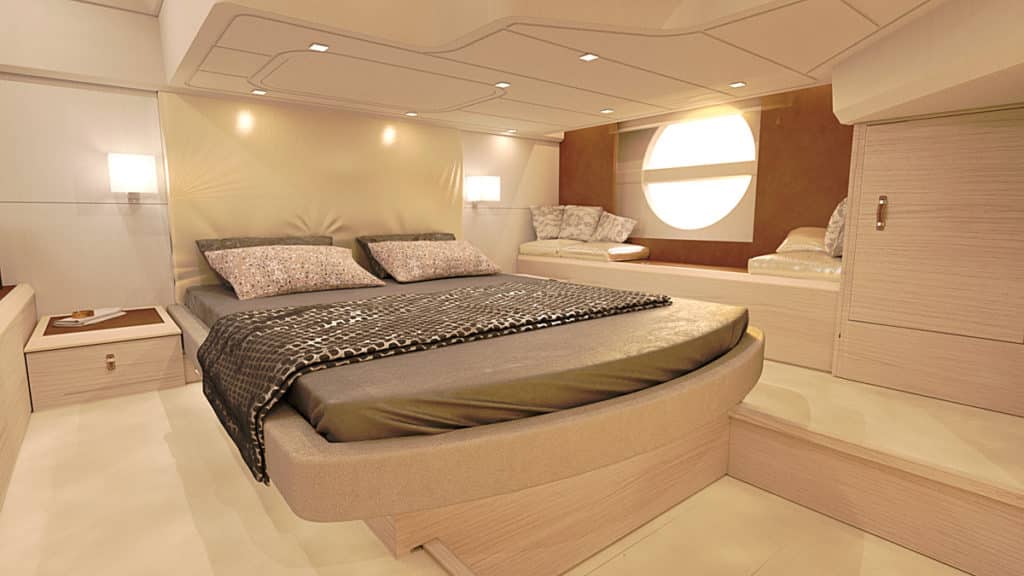
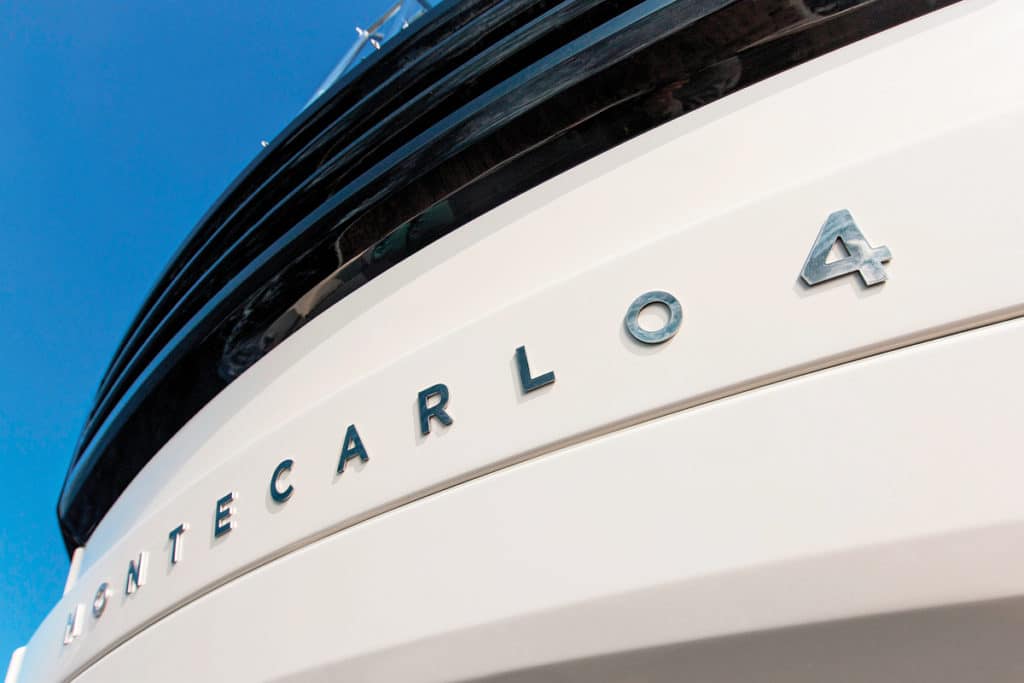
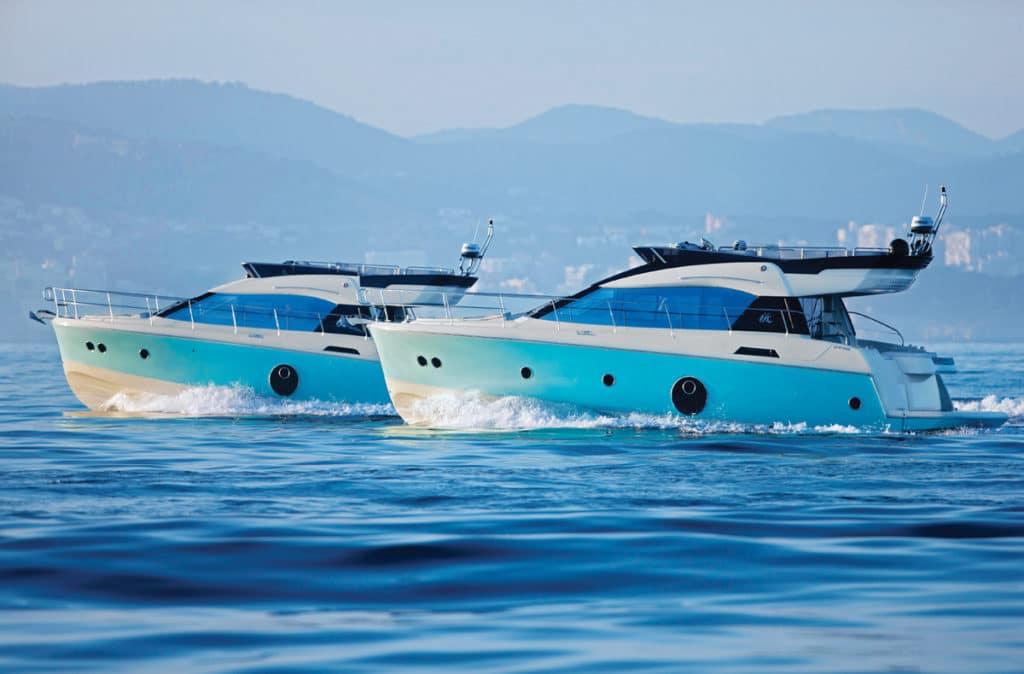
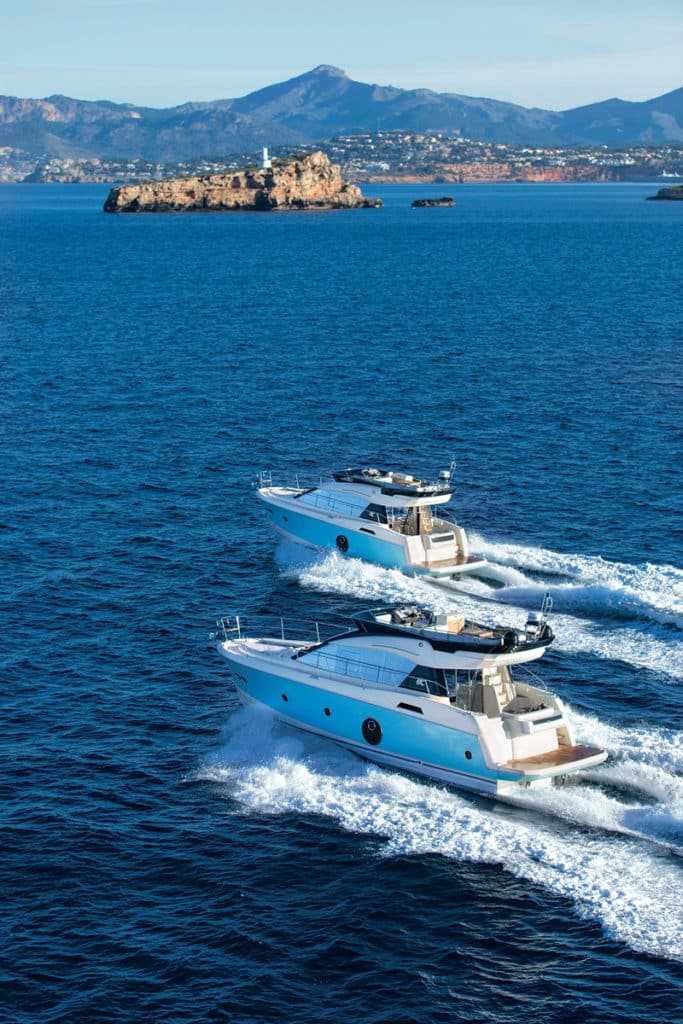
Powered by Volvo Penta IPS and riding a svelte hull form, the Beneteau Monte Carlo 4 is one 45-foot flying bridge cruiser that delivers performance and handling to match its rakish lines. This is a bold boat, as evidenced by sharp styling, a geometric profile and a host of features that we’ll detail here. Nevertheless, old salts can take heart that the “MC4,” as she is colloquially called, is conservatively robust in all the right places; we spent the time crawling her bilges and engine spaces to confirm that very fact.
We trialed the MC4 on a flat, calm Chesapeake Bay during the heat of August, and so, while in the marina readying to depart, I appreciated the air-conditioned comfort of the lower helm. We also enjoyed the electric salon windows. That these open with a switch rather than manually is cool, but the fact that they open at all is even cooler, since many builders use glue-on fixed windows. Besides increasing airflow, opening windows near the helm allows communication with crew on deck or on the dock without having to scream. I took advantage of this nicety, giving the order to let go the lines in conversational tones.
Our slip and marina required a tight 90-degree turn into a fairway immediately after passing the pilings. Naturally, the wind was side-to. But Volvo Penta’s IPS joystick-controlled pod drives made light work of leaving. For the record, we also maneuvered through a maze of bowsprits (Annapolis is a sailing town) and bow pulpits on shifters alone and found that the boat delivered responsive close-quarters handling even without the joystick. The IPS counter-rotating props put a lot of blade area in the water.
This was also evidenced by the way the MC4 roared onto plane once we’d cleared the no-wake sign. The boat topped out at 34 mph. That’s 2 mph slower than the Bavaria Vitress 420 Fly ($670,440 powered like our test boat) that we reviewed for you in July, though the Beneteau burned less fuel, generally, consuming 34 gph at 30 knots compared with 38 for the Bavaria. The Beneteau was running the model T3 propsets, while the Bavaria was fitted with higher pitched T4s when we tested it. The sound levels posted in the accompanying chart reflect noise on the bridge. For reference, we recorded a hushed 74 dbA at the lower station at 3,300 rpm, which is pleasantly quiet.
The MC4 is fun to run, turning with an invigorating agility that shaft-and-strut-powered boats can never hope to emulate. It accelerates briskly, and visibility from both the upper and lower stations is good all around, except for a sight line to the transom corners and platform edge (the price paid for the massive and luxurious flying bridge lounge). So, for docking you’ll appreciate the cockpit controls that Beneteau offers. I know we did.
I’ll say here that there were very few things to gripe about aboard the MC4. We did not like the access to the generator’s sea strainer: It’s mounted too high to see in from above. Additionally, though access to the outboard sides of the engines is great, we’d like to see the engines “handed,” as they say: That is, all dipsticks and filters are on the inboard side of each engine. Beyond those glitches, the engine room rigging was excellent and this boat impressed us on many fronts, one of which is the amount of “big boat” features incorporated.
For instance, we’re used to seeing chilled-water air conditioning aboard boats twice the size of this one, but Beneteau equipped the MC4 with this flexible and efficient technology. The salon table is permanent rather than a pullout job, so it is super-stable. This can seat six people for dinner, using the ottomans as extra seats. Belowdecks, the master stateroom utilizes the full width of the boat, and in the forward stateroom, the hefty, chromed-stainless ports actually open. Even the cleats and other deck hardware state “big boat” by their size, heft and robust installation.
Amenities and luxury? The swim platform hydraulically raises and lowers, the bow lounges are cruise-ship caliber, and the upholstery and detail inside the cabin are epitomized by the real leather used for trim. The aft bulkhead is all glass. Open the slider and you’ll find egress and access unimpeded since there is no step between salon and cockpit. The huge windshield and the hull-side windows and ports all let so much light into the cabin spaces that, but for in the showers, there is always a view of the water and sky.
In recent years, the market for midsize cruisers has been dominated by express coupes. A flying bridge boat like the Beneteau MC4 offers an enhanced experience of luxury, the practical advantage of navigating through shallows that a high vantage affords, and — need we say it? — the commanding feeling of power that comes from handling a boat from on high. If you seek these experiences, or some reasonable facsimile of them, schedule a sea trial aboard Beneteau’s MC4.
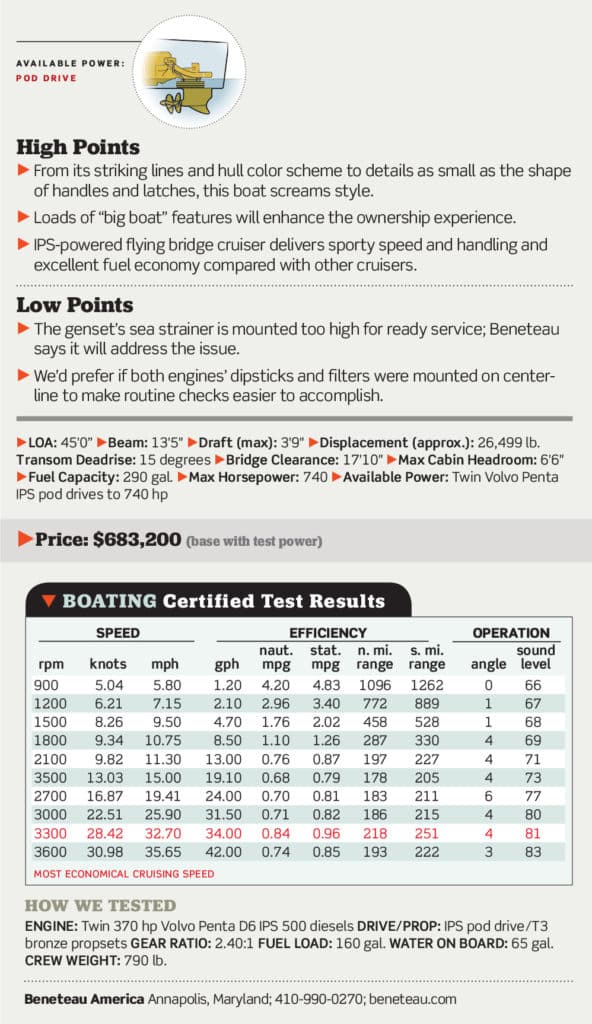
Beneteau Powerboats – Annapolis, Maryland; beneteau.com









